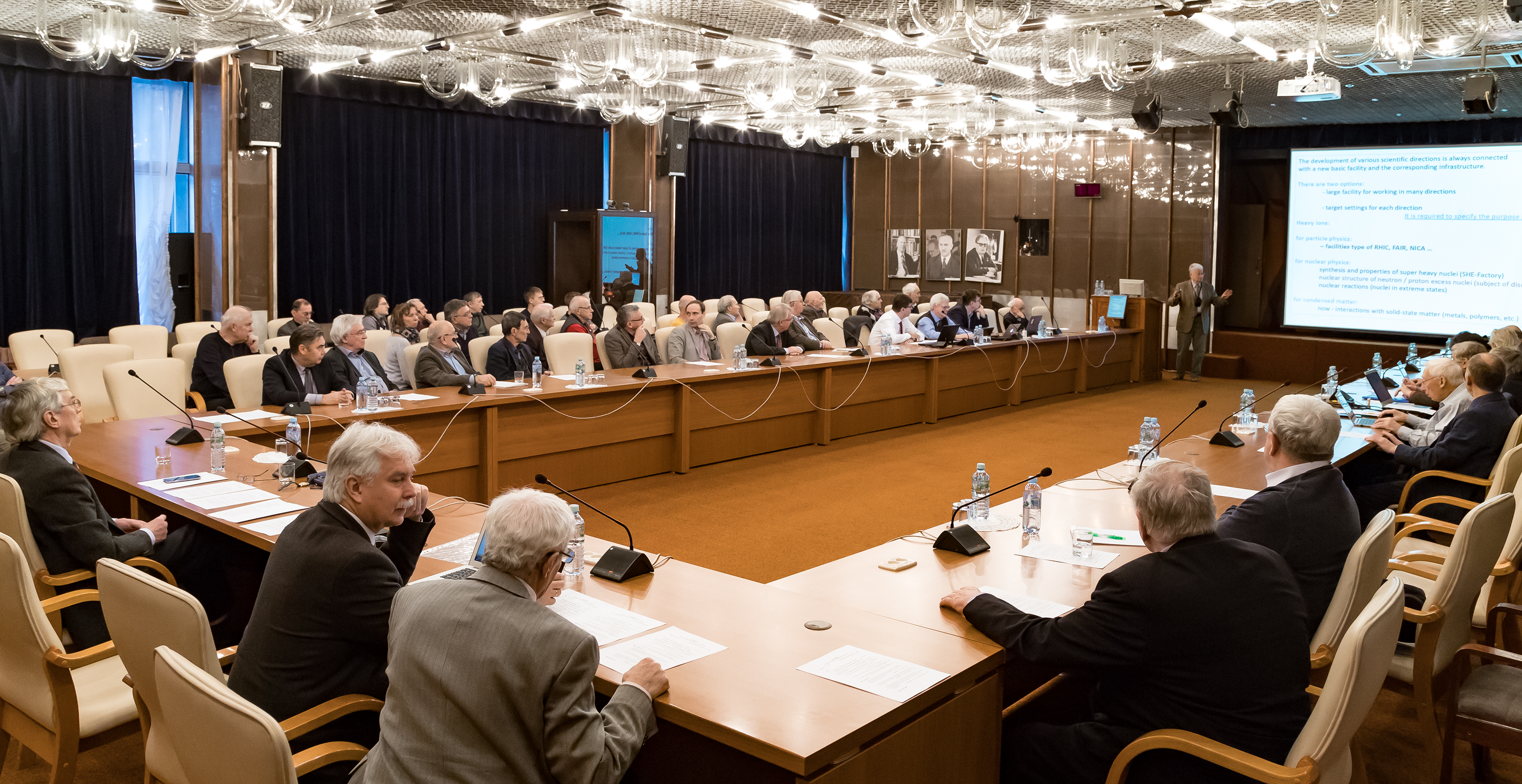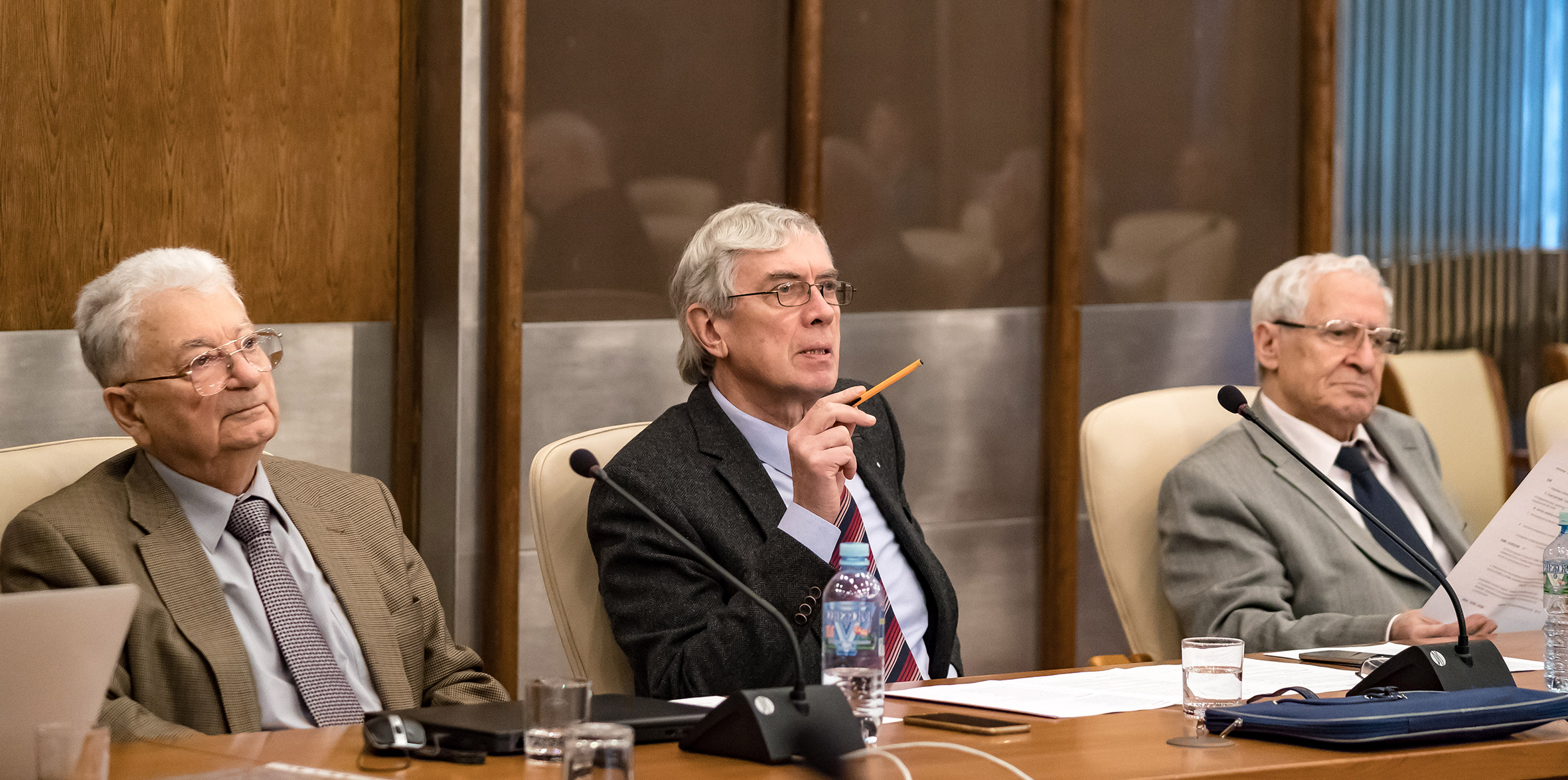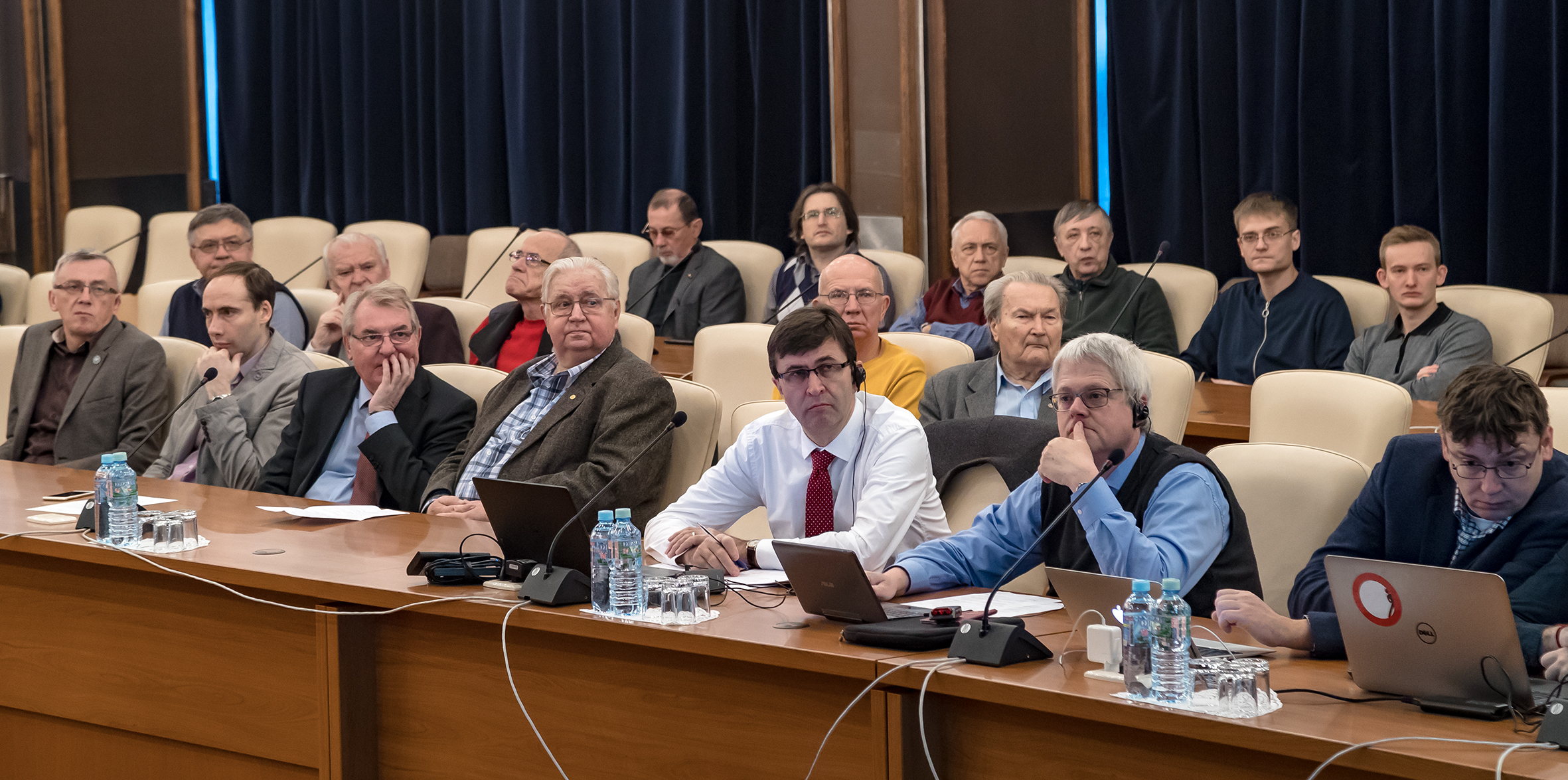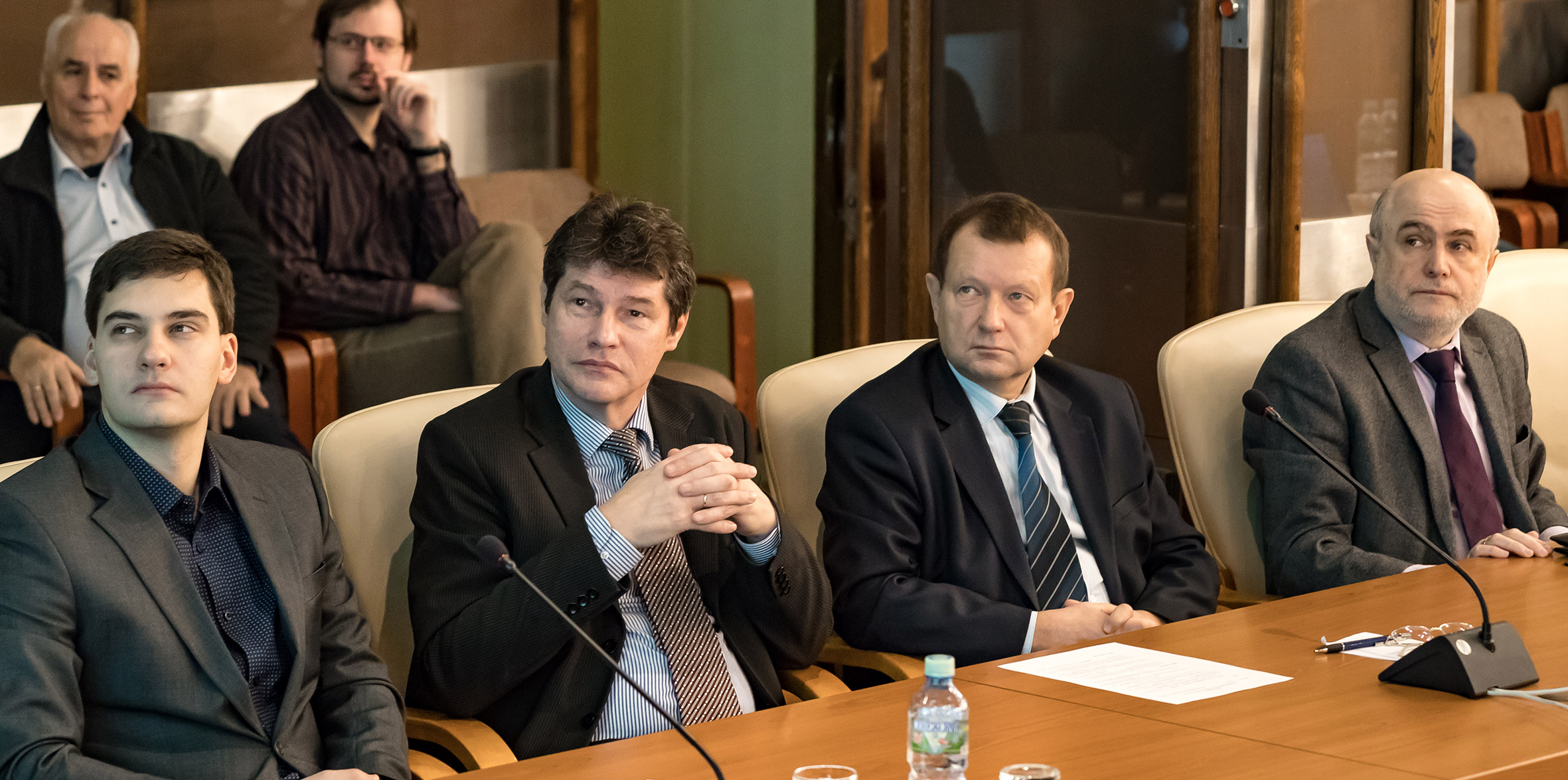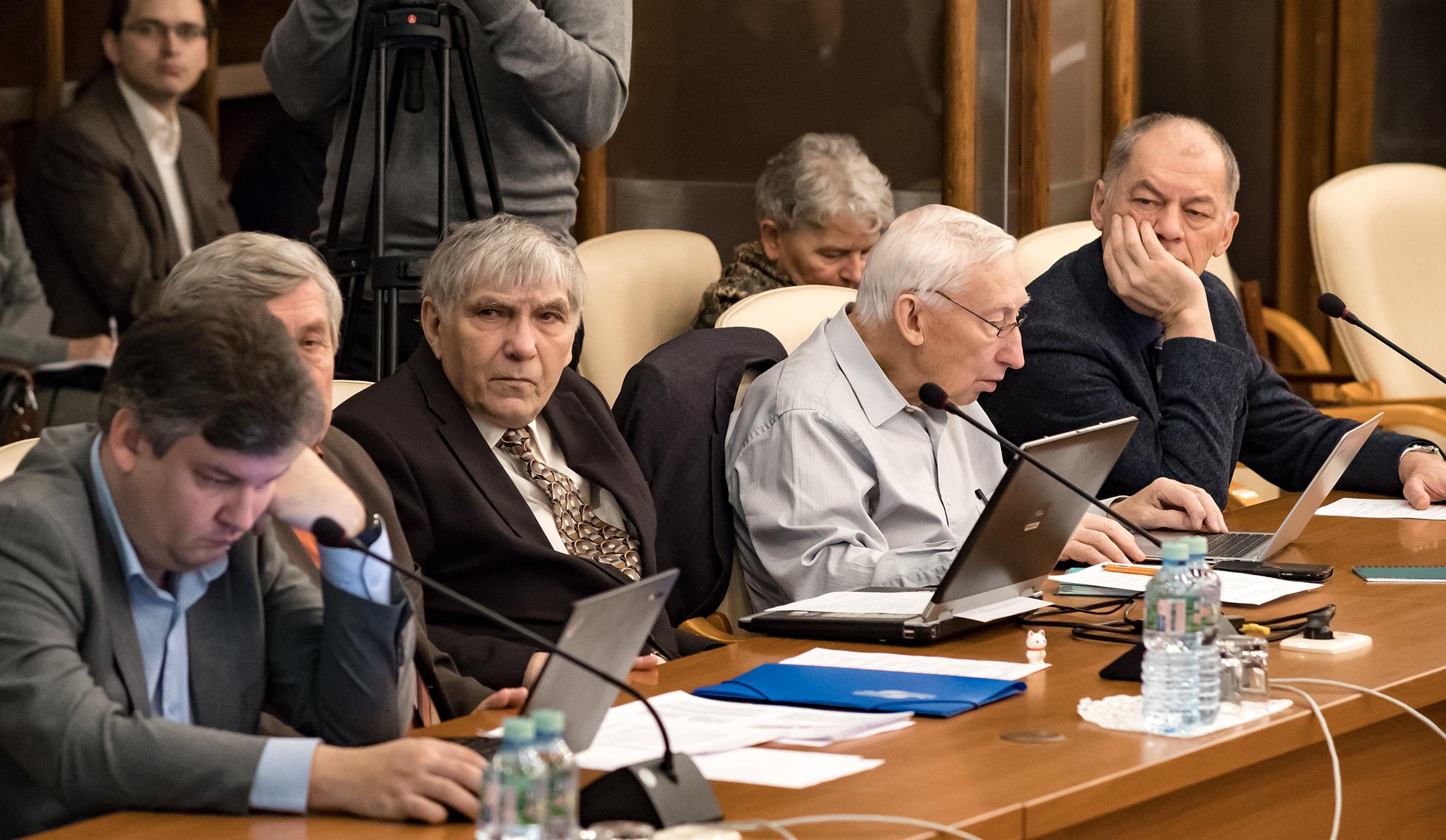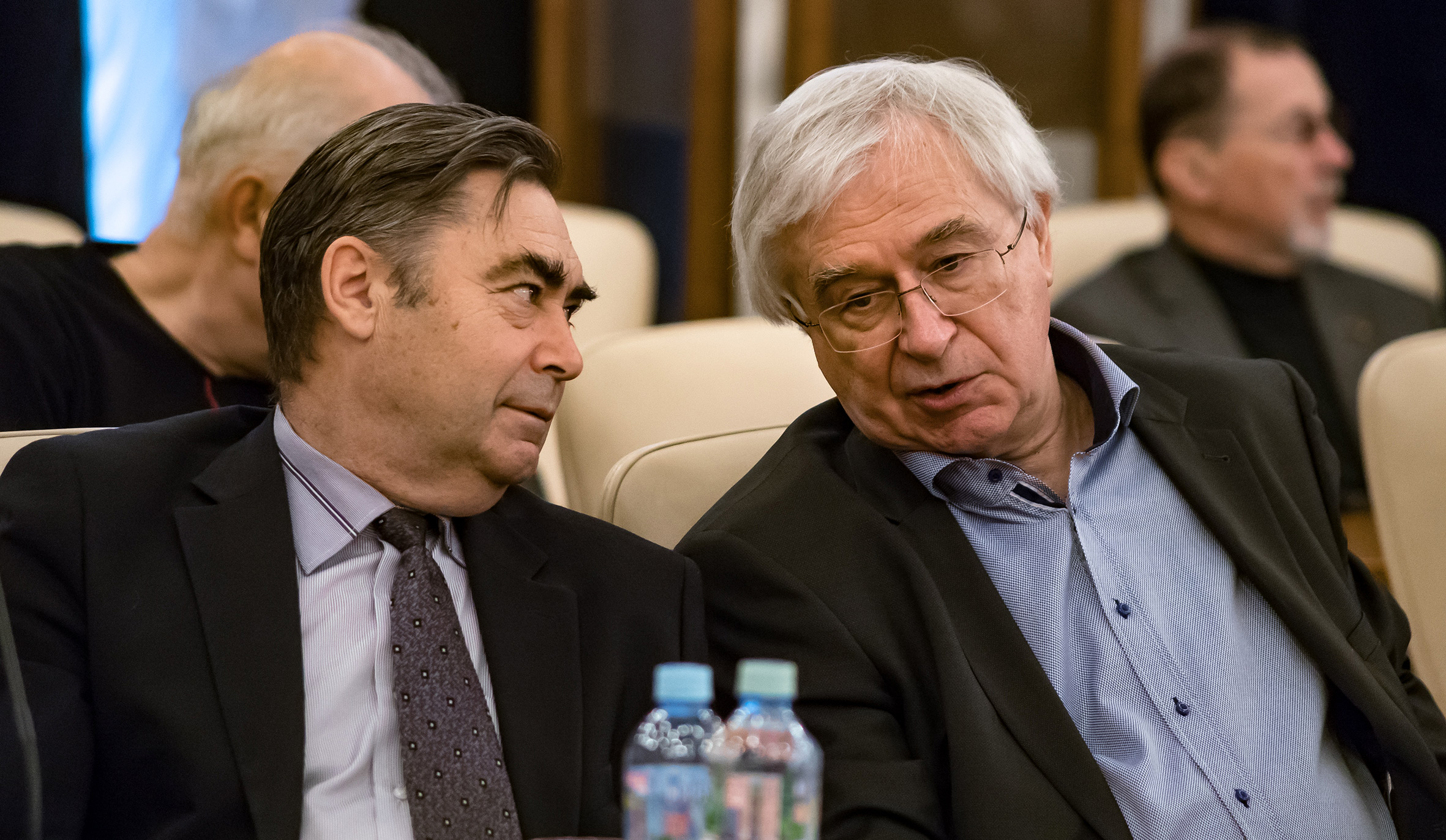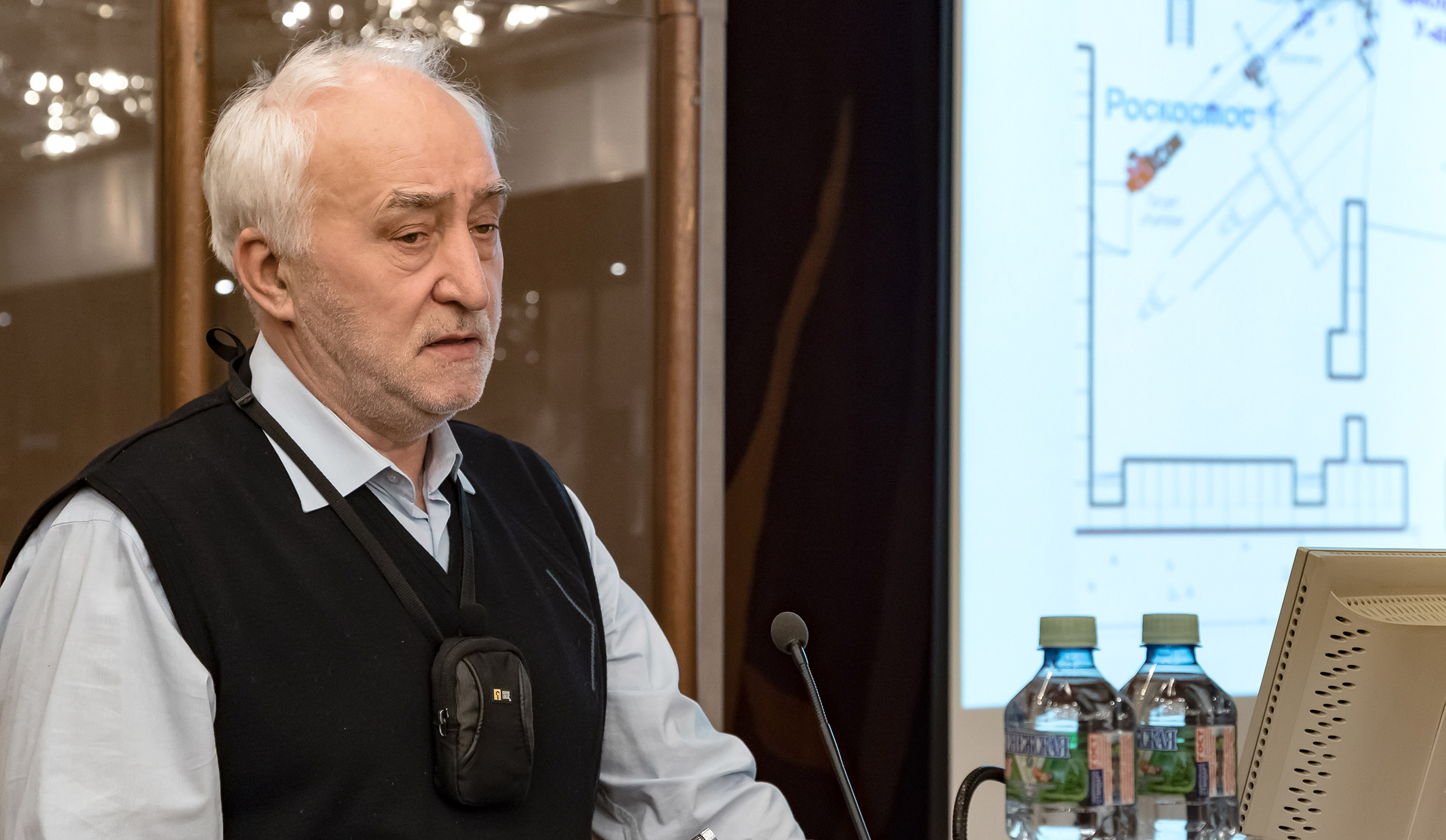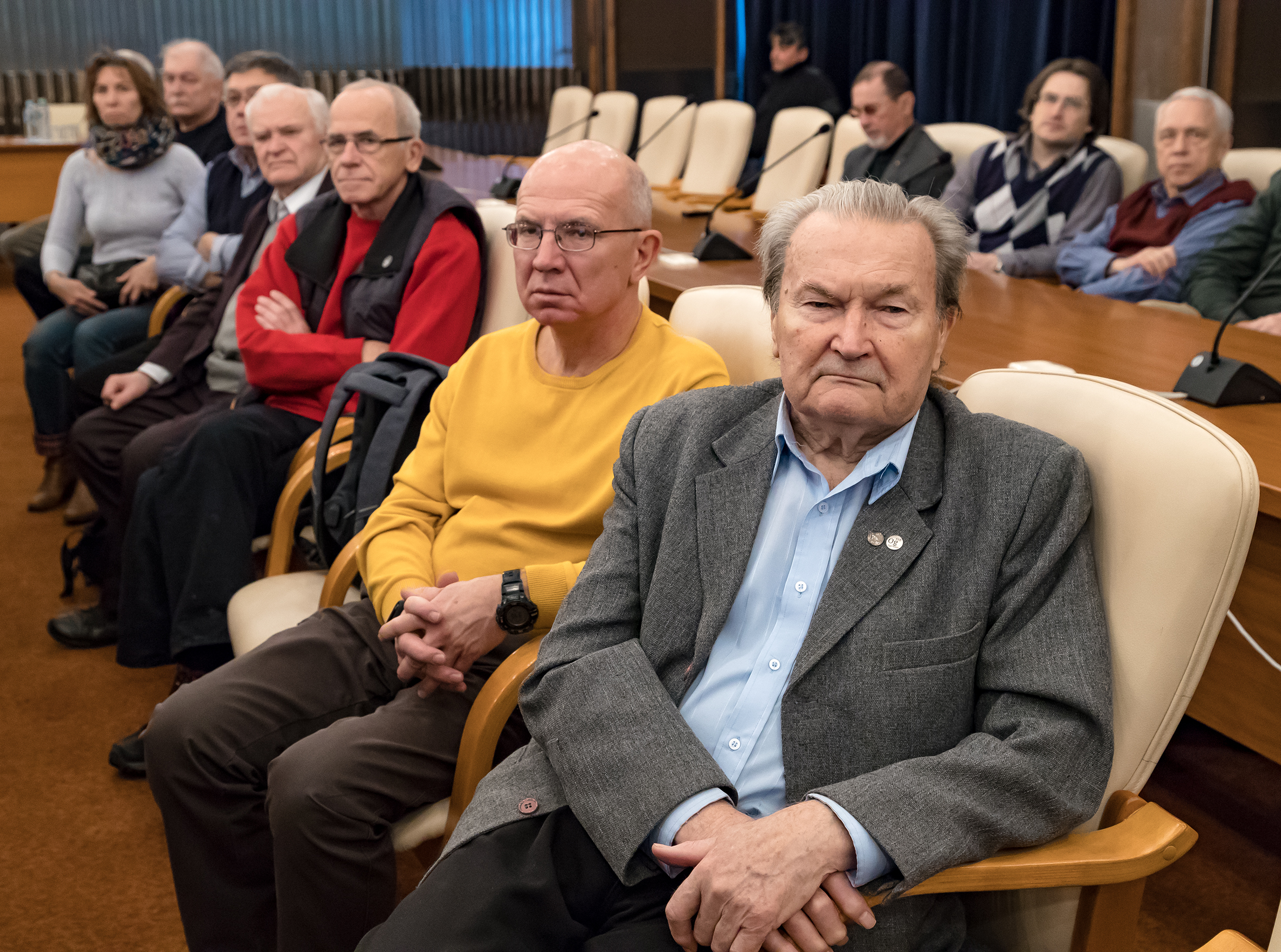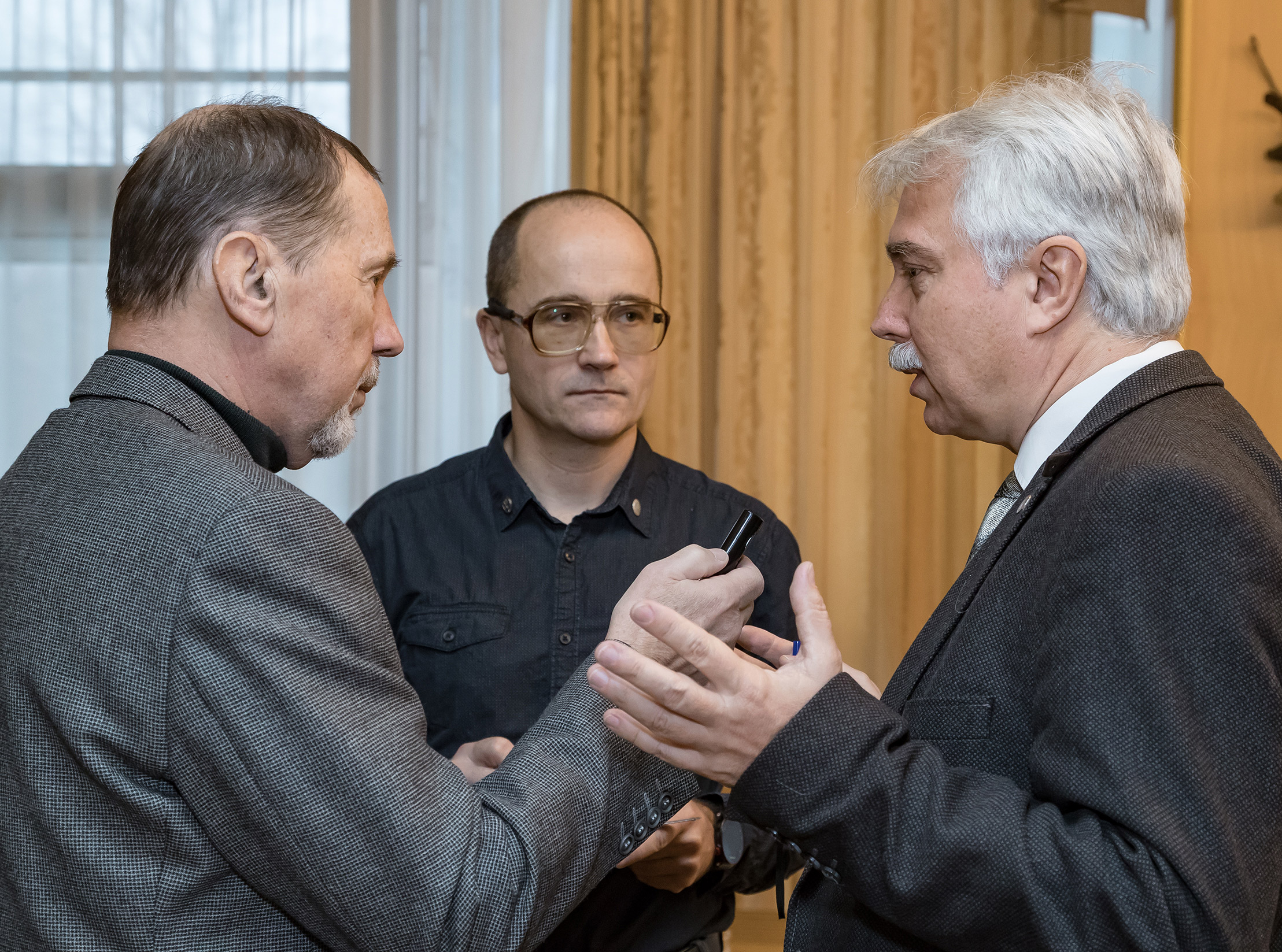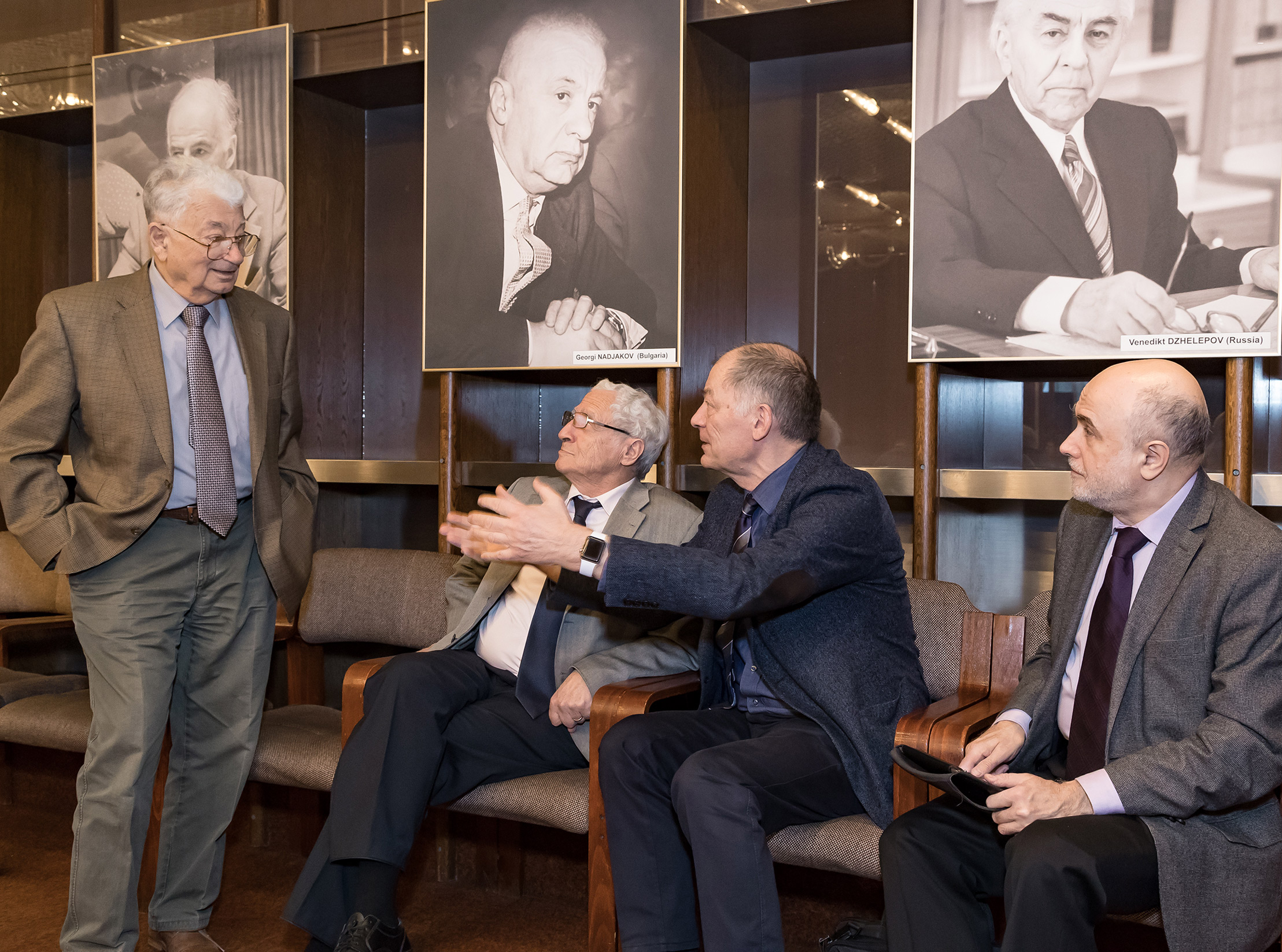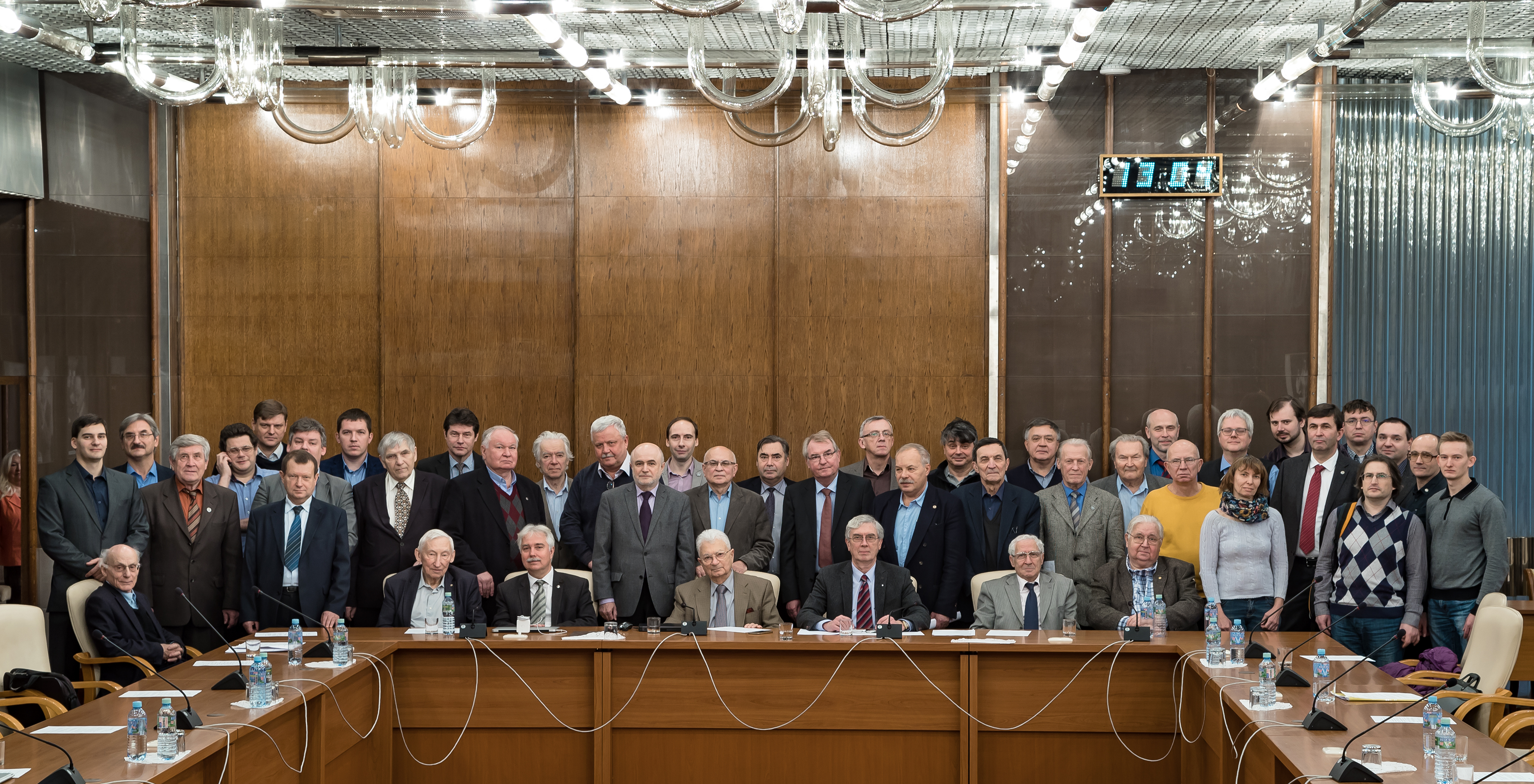New horizons for heavy ions physics
News, 04 December 2017
The beginning of the winter 2017 was marked by an unusual event. On 1 December 2017, an extended meeting of the RAS Council on Heavy-Ion Physics was held in the format of a workshop. Not only the Council members but also specialists from leading institutes of Russia, France and Germany were invited.
A one-day meeting of the Council is a regular event that has been held since December 2012 every 1 – 1.5 years. This time the programme of the Meeting included discussion of research programme on radioactive nuclei beams at the U 400M/ACCULINNA-2 Accelerating Complex in the present and coming Seven-Years Plans as well as trends of this theme development till 2030. The meeting joined a large number of participants (more than 60 people) that is explained by deep interest in the discussed issue.
Chairman of the Meeting Yu.Ts.Oganessian opened the Meeting by the report “Investigations of nuclei far away from the β-stability line” as one of three FLNR fields of research. Yuri Tsolakovich highlighted that the Flerov Laboratory of Nuclear Reactions famous as a producer of superheavy elements and new data on fission physics is also the only one place in Russia where competitive scientific and technological base was created to conduct experiments with radioactive beams within the range of 10 – 50 MeV per nucleon. Other 15 reports of the fruitful programme were devoted to the key fields of research on radioactive nuclei beams in our country and abroad.
Reports by M.Levitovich (GANIL, France), K. Seidenberger, H.Simon and Yu.Litvinov devoted to advanced technologies for conducting such experiments in leading institutes evoked a considerable interest. G.M.Akopiyan, S.A.Krupko and A.S.Fomichev in their reports spoke on new prospects and challenges of the ACCULINNA-II separator development and experiments programme for the nearest and midterm perspectives. L.V.Grigorenko made a report “Scientific programme for electron-ion collider” in which some prospects of such experiments were presented. G.V.Trubnikov, G.G.Gulbekyan and S.M.Polozov (MEPhI), specialists in the field of accelerating equipment, made reports that were met with considerable interest. During a round table chaired by B.Yu.Sharkov, a lively discussion was held with participation of guests from Novosibirsk (BINP) V.V.Parhkomchuk, Yu.N.Shatunov, and P.Yu.Shatunov after the intriguing report “The electron-ion collider using crystalline ion beams” delivered by I.N.Meshkov. All-in-all the Council and participants of the Meeting affirmed the scientific programme of research at the U-400M/ACCULINNA-2 until 2023, and also showed great interest in the plans for the future. The DERICA (Dubna Electron-Radioactive Ion Collider fAcility) project brought up for discussion was considered a promising and ambitious enough for potential discoveries. This project is able to advance JINR to the world level in this field just like NICA after its bringing into operation.
Discussions of reports and plans were continued more informally during the reception that was lingered until 9.30 in the evening. The results of the Meeting will be documented by the RAS Council Decisions and will be available at the FLNR web page.
Andrey Fomichev, Head of FLNR Sector, member of the organizing Committee of the meeting
Photo by Elena Puzynina
